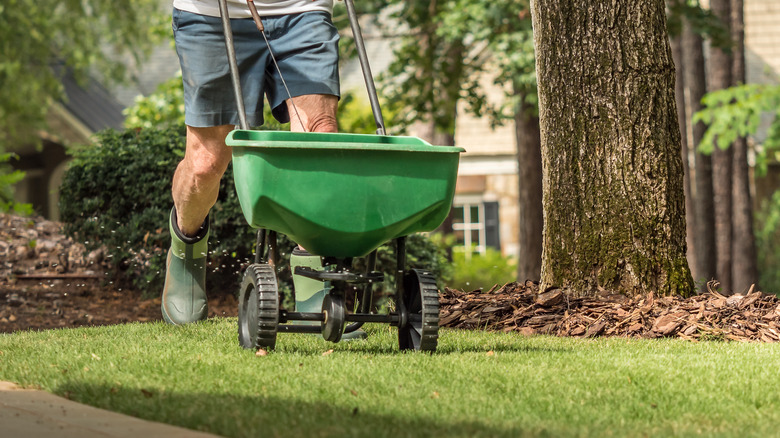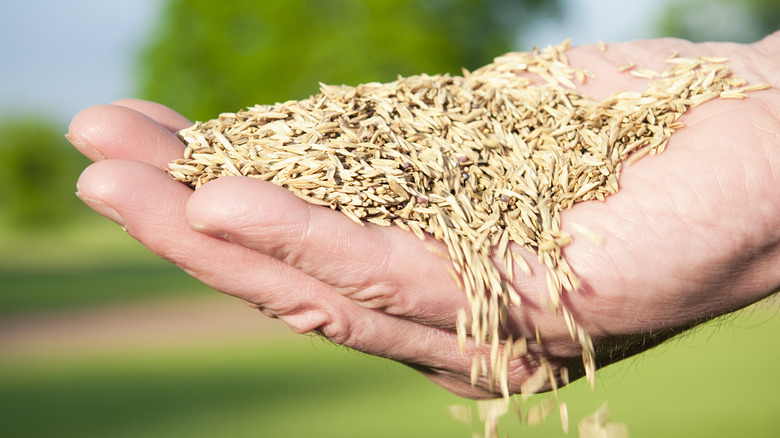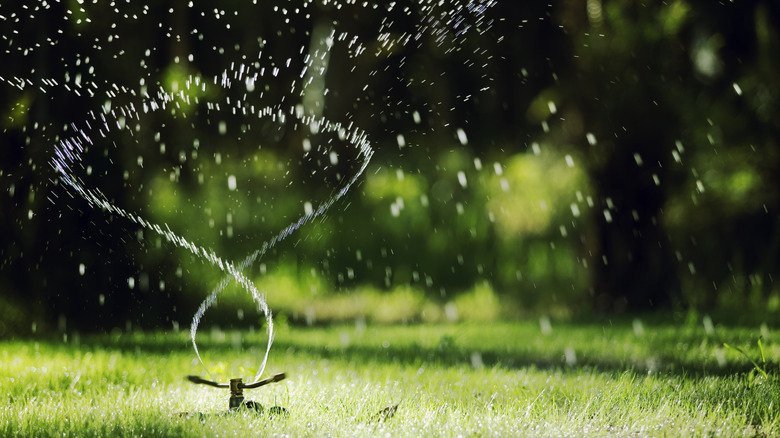Here's How Long It Typically Takes For Grass Seed To Grow
If your lawn has seen greener days, you may consider installing sod or planting grass seed. Laying sod works faster, so you'll have a lawn you can use and enjoy relatively quickly. On the other hand, planting grass seed is significantly cheaper but takes longer to be able to begin using the space. Generally speaking, grass seed takes 3 to 28 days to germinate. However, your specific timeframe will depend on several factors, such as the local climate and the type of grass you desire for your yard.
Of course, just because you see some sprouts doesn't mean the lawn is ready for heavy use. The young plants can be quite tender, and they need some time to mature after germination before you can use the lawn. Sowing seeds by hand or using a spreader can require as long as two months before you can even mow your grass, while sod is usually ready to mow within two to three weeks.
Best grass varieties for fast growth
If you are looking for a fast-growing grass seed, you'll have some limitations regarding the types you can plant. However, if you don't mind waiting a while for a lush lawn, you'll have far more options. In terms of rate of growth, ryegrass is hard to beat. This species is known to germinate within a few days and creates a solid ground cover within a month – quite a bit faster than other varieties. As such, if you are overseeding a lawn where the grass is thinned out due to overuse, ryegrass will quickly provide a bright green appearance.
A more common type of seed for people to plant is Kentucky bluegrass. However, this can take up to 10 days to sprout and may require up to two months before it's established. Tall fescue has a similar germination period to bluegrass. If you want to shorten this timeline, you can soak the seeds in water for two or three days before planting. This allows the seeds to begin the germination process before they go into the soil, giving them a head start.
How weather and moisture affect grass seed growth
Pay attention to your local climate and choose the best time of year to begin planting grass seed so it can germinate on schedule. For example, when planting in the fall, you must provide ample time for the grass to establish a root system before the first frost. Plant in the autumn at least 45 days before the expected first frost for the best chance of the new grass surviving the winter.
If planting in the spring, make sure the soil temperature is warm enough to support the grass seed you've chosen. Warm soil will help ensure timely germination. However, don't allow yourself to be fooled by a few warm days in the early spring. If there's still a chance of lingering frost or cold weather, wait to start the planting process.
To ensure the grass has the best chance at survival and grows lush and strong, you must also care for it properly. Grass seed typically germinates faster when the soil is constantly moist. Therefore, you need to set aside time twice daily to water the areas where you planted. If you have a trip planned shortly after you plant your seeds, it's better to put off seeding the lawn until you can water it regularly.


